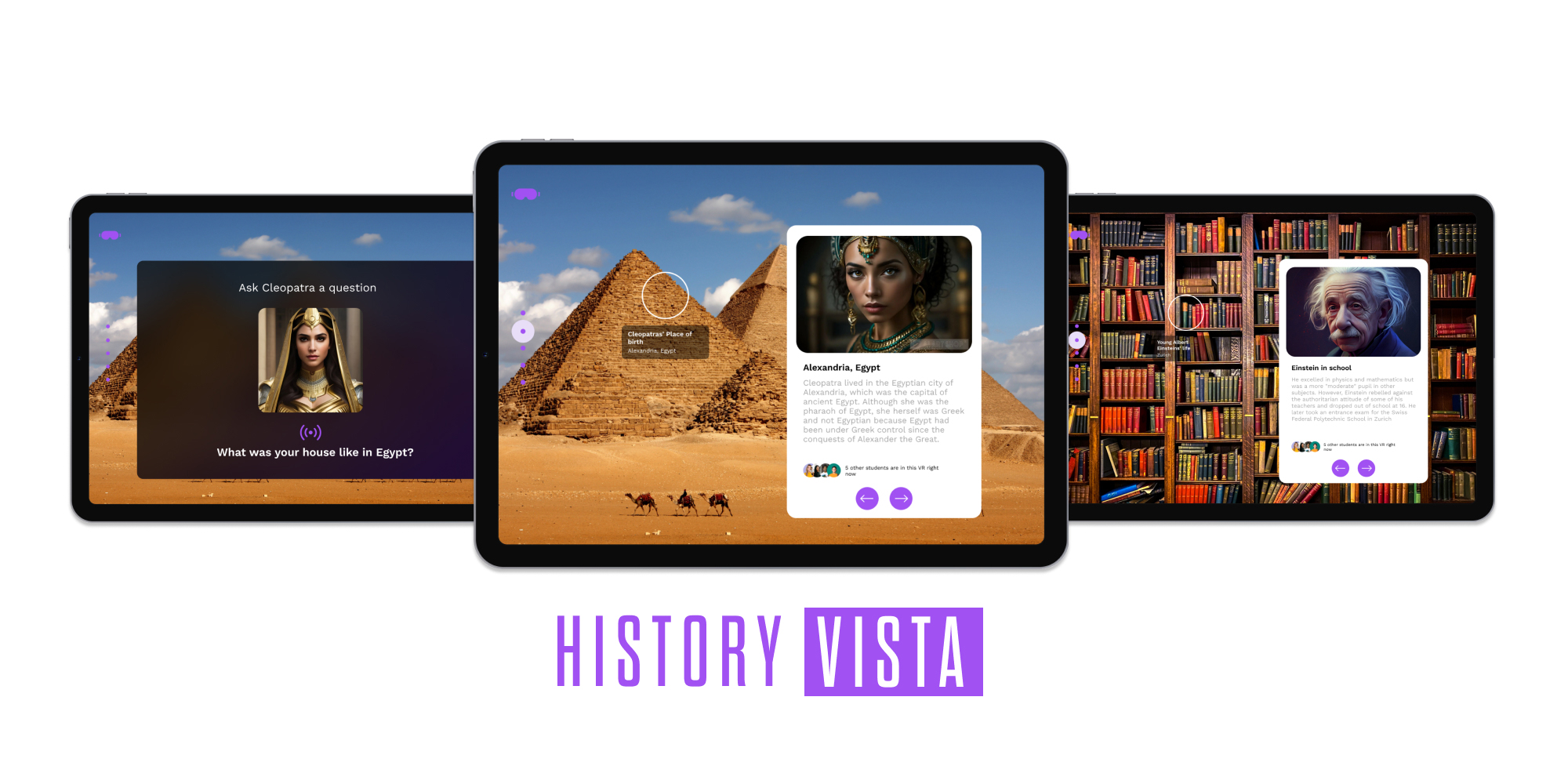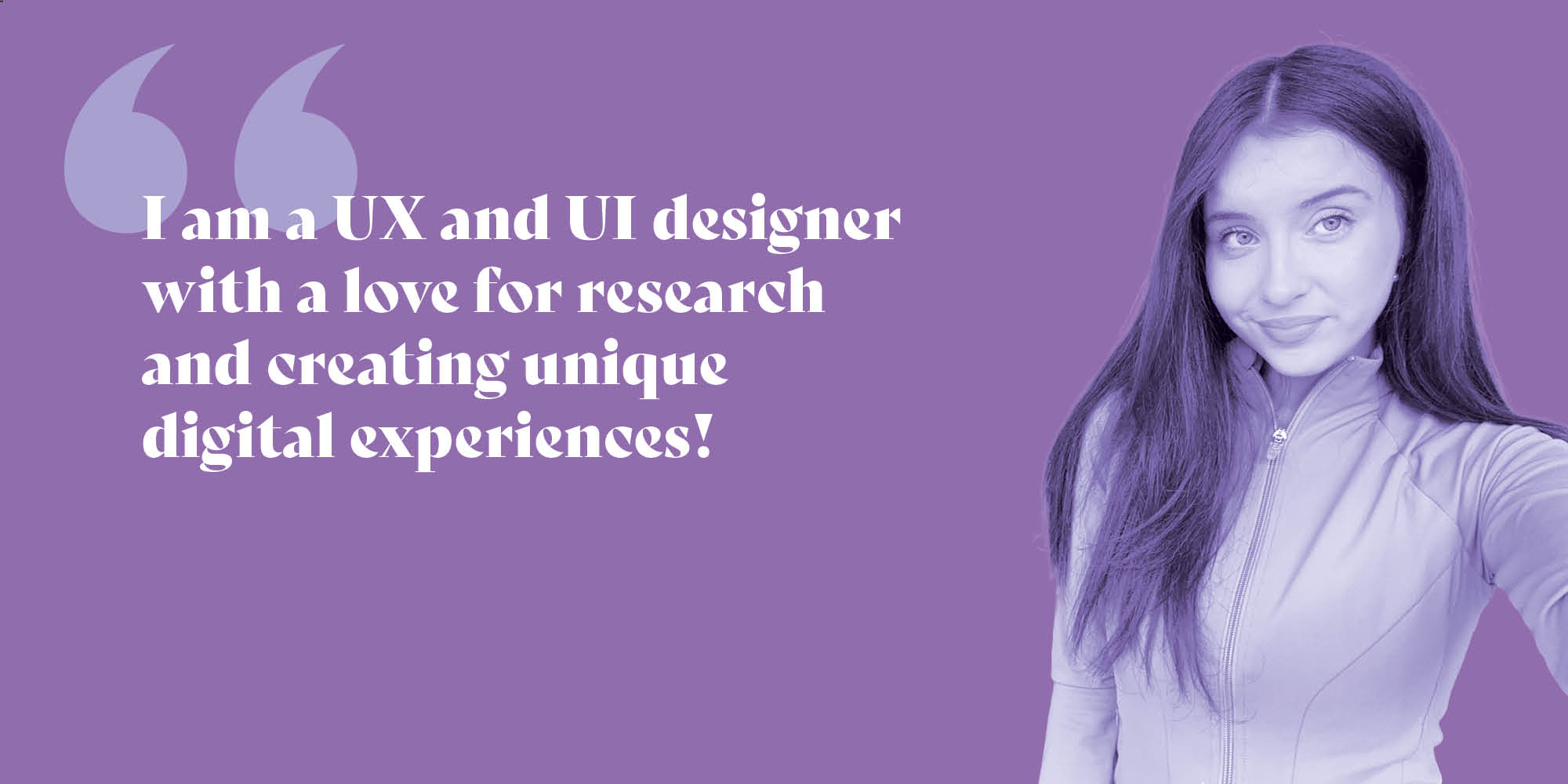

Hi! I’m Cara. A UX Designer with a love for digital design and solving problems. I am passionate about research, creating user friendly and unique experiences. Throughout my journey as a student in IXD, I have gained amazing experience and developed my skill set as a designer in all areas. I have learned so much about myself and discovered new passions in design along the way.
In my spare time I love to read, spend time at the beach and experience new things!
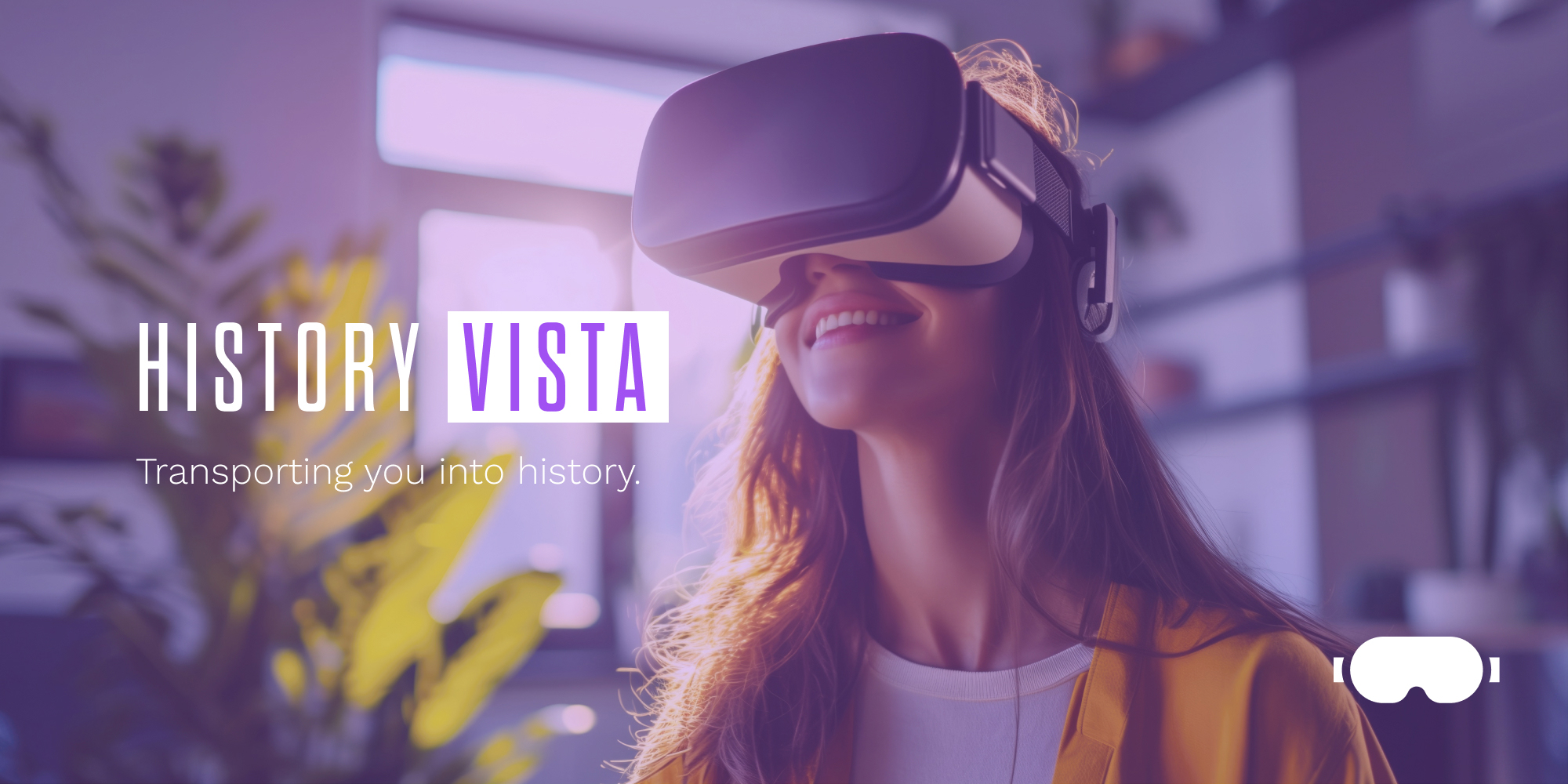
I wanted to explore the problems within education, more specifically the problems facing history. History is something that interests me and an area I feel that is greatly unexplored in today's digital world. The GCSE history intake is getting lower each year, and the pass rate is also decreasing for those who do choose to take it. I wanted to explore why.
Teachers are unaware of the benefits of technology like Artificial Intelligence (AI) and Virtual Reality (VR) in the history classroom, they feel they would need training to implement such additions into the classroom and with issues like budgets they feel like a digital history tool would not be possible. My goal with this project was to look at these problems and come up with a solution for both.
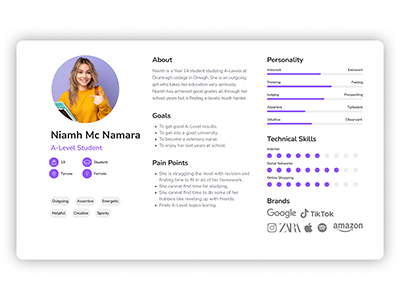
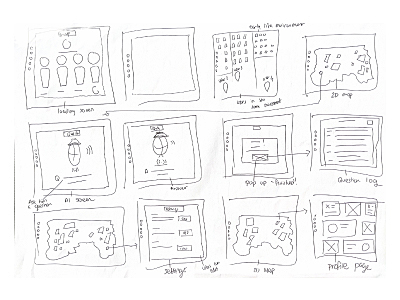

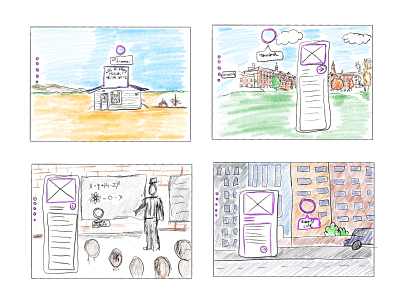
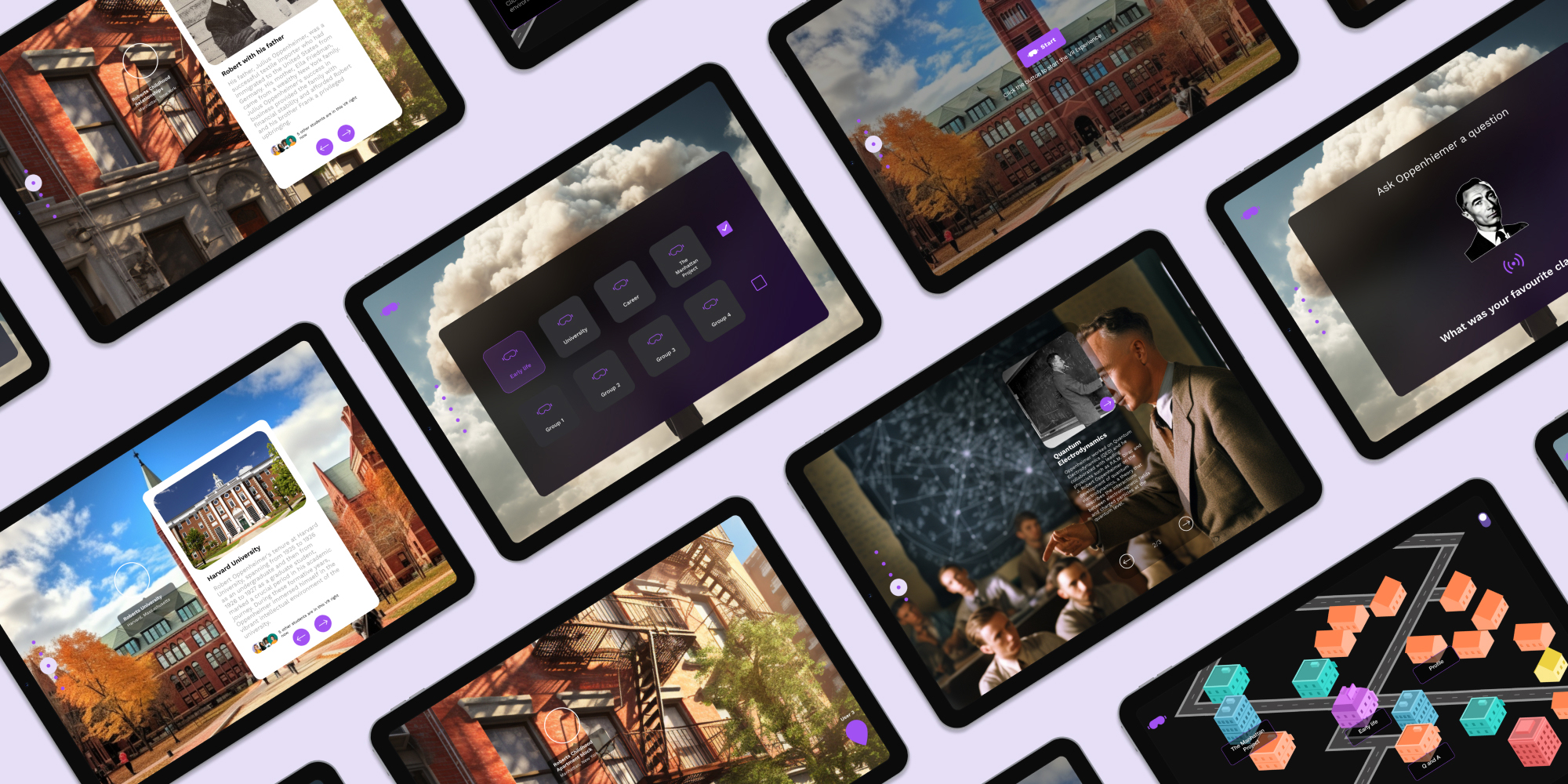
Research has been at the forefront of this project and has been a huge part of the process. As someone who did not take on history for GCSE or A-Level I had no experience with this subject or the teaching of it in schools today. So gathering research from the target group - students and teachers was vital for me. Research has infiltrated every aspect of this project. I have delved into many areas involving education itself, various history topics, and I have done extensive research on new areas for me including VR and AI.
User research was one of the main areas of research for me as I wanted the users to be at the forefront of every decision I made for this product. So, speaking to them and learning from them was a key element for me as a designer. I conducted many user interviews at the beginning and end of my project to ensure I received feedback throughout. Getting to know more about students and their struggles with History as a subject was insightful and their thoughts and opinions led to many breakthroughs in my project.
From here I began to take all of the user research and create user personas, journey maps, empathy maps and even completed card sorting exercises to discover issues these users face. All of these methods helped me to discover problems users are having in these areas and helped me to find a solution.
Since the world of Artificial Intelligence (AI) and Virtual Reality (VR) was new to me, at the beginning of this project I had to complete a lot of competitor analysis. I focused on Virtual Reality (VR) apps and websites, to get some knowledge on what is out there for users today regarding Virtual Reality. This was extremely helpful however, I then had to narrow my search to Virtual Reality (VR) educational apps which is where I found a huge gap in the market and this led me to pursue the idea of combining education and Virtual Reality (VR) together.
Sketching and wire-framing were a key part in this process for me. I completed many rounds of sketching to come up with a good solution for the problem. It was a great way to help me figure out what these historical experiences would look like, what the AI section would look like and how it could all fit onto the screen. Low-fi wireframing was also vital, as it helped me to figure out placement and helped me to visualise my product.
Creating a VR centered product is something I have never done before so this was a new area for me. I was starting from scratch and learning as I went. Creating a VR application had its challenges, like designing and prototyping for Virtual Reality (VR) screens. I had never prototyped with DraftXR before so it took me a while to become familiar to the plugin. DraftXR is a Figma plugin that allows for instant VR prototyping, it allows screens to be viewed in Virtual Reality, both on a browser and using a headset.
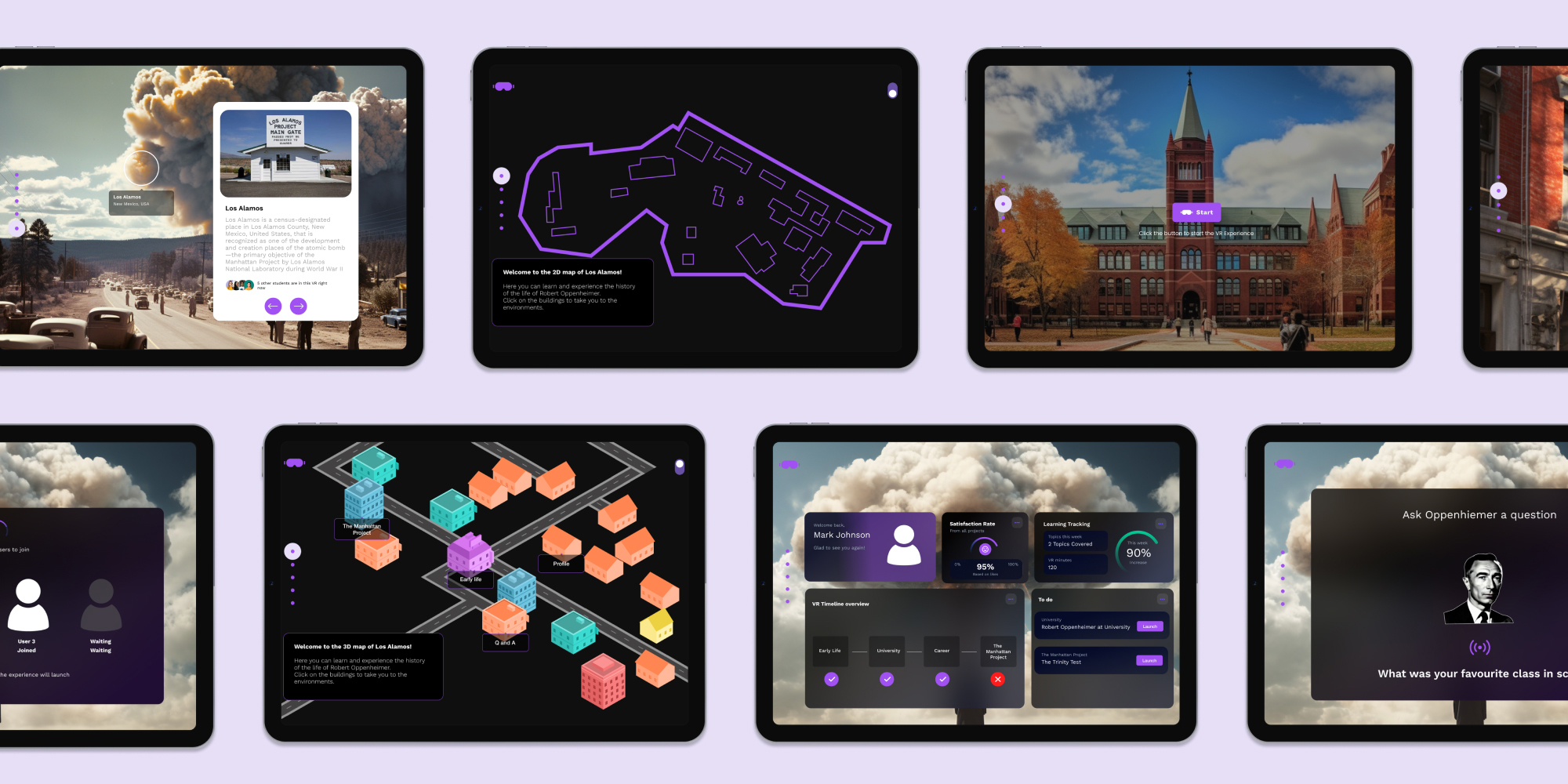
History Vista is an educational Virtual Reality (VR) History aid for the classroom. It is made for History GCSE students to help improve learning and to bring education into the future. History Vista aims to transport students into history so they can experience it first hand, happening around them. The Virtual Reality (VR) experiences plans to completely immerse users, taking history off the books into the future. To increase the interest in history as a subject, encouraging more young people to want to learn about the past.History Vista transports users into history with features like: Virtual Reality environments, Artificial Intelligence question and answers and group sessions.
Virtual Reality (VR): The Virtual Reality (VR)VR experience allows the user to explore the environments and become completely immersed in them. The user can jump from each environment to the next, reading or listening to the history on interactive cards.
Artificial Intelligence (AI): The Artificial Intelligence (AI) question and answer is an option for users if they want to step out of the environment and have a one-to-one with Oppenheimer himself. It gives users an opportunity to hear the history being told directly from Robert Oppenheimer himself instead of reading the content cards.
Group: Group session offers users the chance to join group VR experiences with their classmates and experience the environments together. The user can click on the group option on the home screen menu and wait for their classmates to join the experience.
This project has been an important one for me and one that made me step out of my comfort zone. I felt there was a new challenge at every step but that is what I wanted out of this year - to have a project I am passionate about that drives and challenges me throughout. Through working on History Vista I got to work closely with the education system, talking with students and teachers throughout the process, which was motivating for me.
I hope I have created something that can change students' thoughts on History as a subject as I feel it is an important one, and also change teachers' beliefs on the benefits of integrating technology into education.
